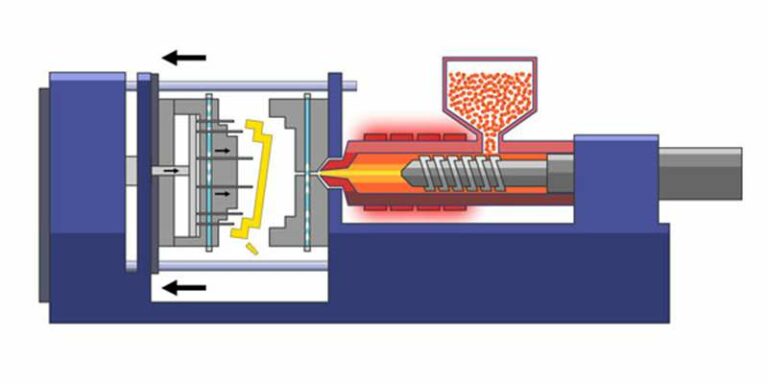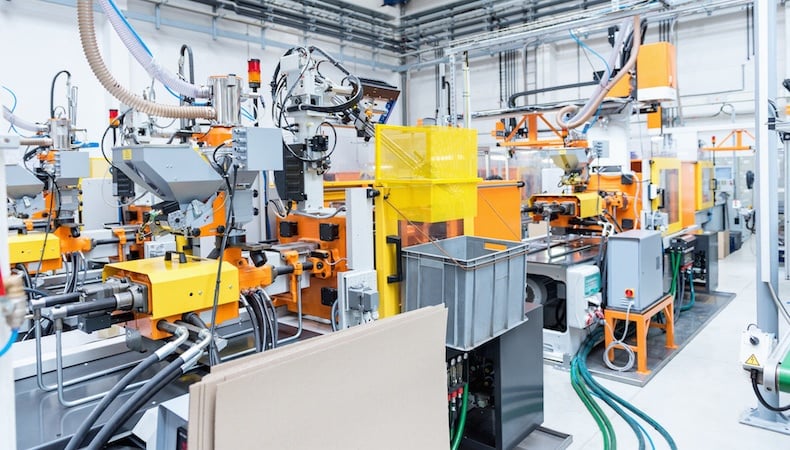The Effect of Plastic Injection Molding on Reducing Production Expenses and Waste
The Effect of Plastic Injection Molding on Reducing Production Expenses and Waste
Blog Article
The Future of Plastic Shot Molding: Developments and patterns to See
As the plastic injection molding industry advances, a number of essential trends are arising that pledge to reshape its landscape. Automation and smart production methods are set to boost efficiency, while the shift in the direction of sustainable materials shows a growing ecological awareness.
Automation and Smart Manufacturing
As the plastic shot molding market evolves, automation and clever manufacturing are taking center stage, changing production procedures - Plastic Injection Molding. The combination of advanced modern technologies such as robotics, IoT (Internet of Points), and man-made knowledge is allowing manufacturers to improve efficiency, lower operational prices, and enhance product high quality. Automated systems streamline process, minimizing hand-operated intervention and boosting throughput, which is vital in satisfying the rising demand for rapid production cycles
Smart making technologies promote real-time tracking and information analysis, permitting companies to enhance machine performance and forecast maintenance demands. This proactive technique not just lessens downtime yet also prolongs the life-span of equipment. The usage of joint robotics, or cobots, boosts the flexibility of production lines, allowing workers and makers to run side by side securely and successfully.
The fostering of automation in plastic shot molding is not merely a trend but a tactical imperative for businesses aiming to remain competitive in a global market. By utilizing these technologies, producers can accomplish higher precision, reduce waste, and adapt promptly to transforming consumer needs, placing themselves for sustainable growth in an increasingly automated future.
Lasting Products and Practices
The press towards automation and wise manufacturing has led the way for a higher emphasis on sustainable products and methods within the plastic injection molding market. Companies are increasingly looking for green options to conventional petroleum-based plastics, resulting in the adoption of recycled and bio-based materials. These sustainable materials not just minimize environmental impact yet likewise align with customer demand for greener products.

Moreover, partnership in between makers, product vendors, and ecological companies is promoting development in the advancement of sustainable materials that meet performance standards without compromising top quality. As laws around plastic use come to be more stringent, the market is poised to adapt by welcoming these lasting strategies, making certain long-lasting feasibility and decreasing reliance on non-renewable sources. The assimilation of sustainability right into plastic injection molding is not merely a fad; it is ending up being a vital element of corporate duty and operational quality.
Breakthroughs in 3D Printing
Current innovations in 3D printing modern technology are considerably transforming the landscape of plastic shot molding. The integration of additive manufacturing processes permits for the rapid prototyping of complex geometries that were difficult or once tough to accomplish through typical techniques - Plastic Injection Molding. This ability not only speeds up product advancement cycles yet likewise lowers material waste, straightening with the growing need for lasting manufacturing techniques
Furthermore, the introduction of hybrid manufacturing strategies, which combine 3D printing and injection molding, supplies producers the capacity to look here create elaborate layouts while maintaining the effectiveness of mass manufacturing. This approach allows the manufacturing of tailored parts tailored to certain consumer requirements without compromising the rate and scalability that shot molding provides.
Additionally, improvements in products, such as high-performance polymers and compounds specifically developed for 3D printing, are improving the useful capacities of printed components. These materials can stand up to higher stress and anxiety and exhibit improved thermal residential properties, making them ideal for even more requiring applications.
As 3D printing remains to evolve, its integration into plastic injection molding processes promises to enhance productivity, decrease costs, and foster development in product style, positioning producers to better meet the challenges of a competitive market.
Data Analytics and IoT Assimilation
Information analytics and the assimilation of the Net of Points (IoT) are changing plastic shot molding by supplying makers with unmatched insights into their procedures. By leveraging real-time information gathered from interconnected makers and sensors, producers check can keep track of performance metrics, identify inadequacies, and maximize manufacturing processes. This data-driven approach assists in predictive maintenance, lowering downtime and expanding devices lifespan.
Furthermore, IoT assimilation enables enhanced quality assurance. By continually tracking variables such as cycle, pressure, and temperature level times, makers can swiftly detect inconsistencies from established criteria and make modifications in real time. This not just improves item consistency yet also lowers waste and scrap rates.
The fusion of information analytics and IoT technologies additionally equips producers to embrace more dexterous production strategies. With accessibility to comprehensive information analytics, companies can react to market demands with better flexibility, changing manufacturing routines and setups as needed. This adaptability is crucial in a rapidly altering manufacturing landscape.

Customization and Layout Adaptability
Just how can modification and style flexibility boost the competition of plastic injection molding? Modification enables manufacturers to fulfill certain client demands, accommodating one-of-a-kind measurements, shapes, and capabilities that basic items may not fulfill.
Innovations in design modern technologies, such as computer-aided style (CAD) and quick prototyping, additional bolster this pattern. These devices make it possible for developers to create complex patterns and complex geometries, which can be effortlessly integrated into the manufacturing procedure. Consequently, producers can react swiftly to altering customer preferences and market needs.
Moreover, the application of modular tooling systems boosts design versatility, enabling quicker changes between various item designs without substantial downtime. This adaptability can result in lowered lead times and lower production expenses, making firms more affordable and agile. Ultimately, accepting modification and layout flexibility in plastic injection molding not only raises item offerings yet additionally strengthens market positioning in an ever-evolving landscape.
Conclusion
The future of plastic injection molding is defined by substantial innovations in automation, lasting practices, and innovative materials. The integration of IoT and data analytics will improve functional performance and predictive maintenance. Furthermore, the fostering of recycled and bio-based products, along with development in 3D printing, will certainly promote sustainability within the sector. Customization through modular tooling and quick prototyping will certainly make it possible for suppliers to continue to be affordable and responsive to the vibrant needs of the marketplace.

The future of plastic injection molding i loved this is defined by considerable innovations in automation, lasting practices, and innovative materials.
Report this page